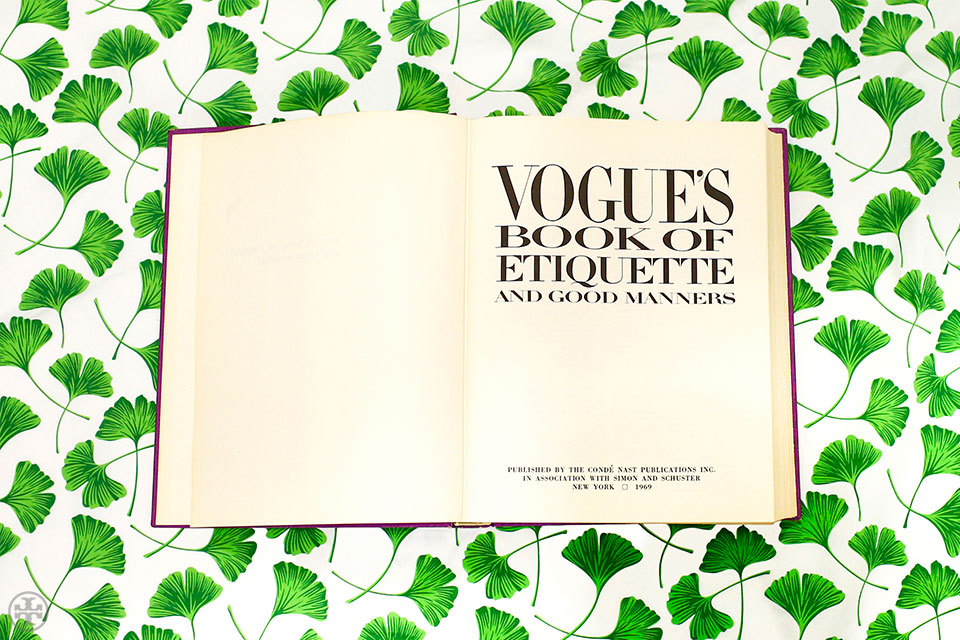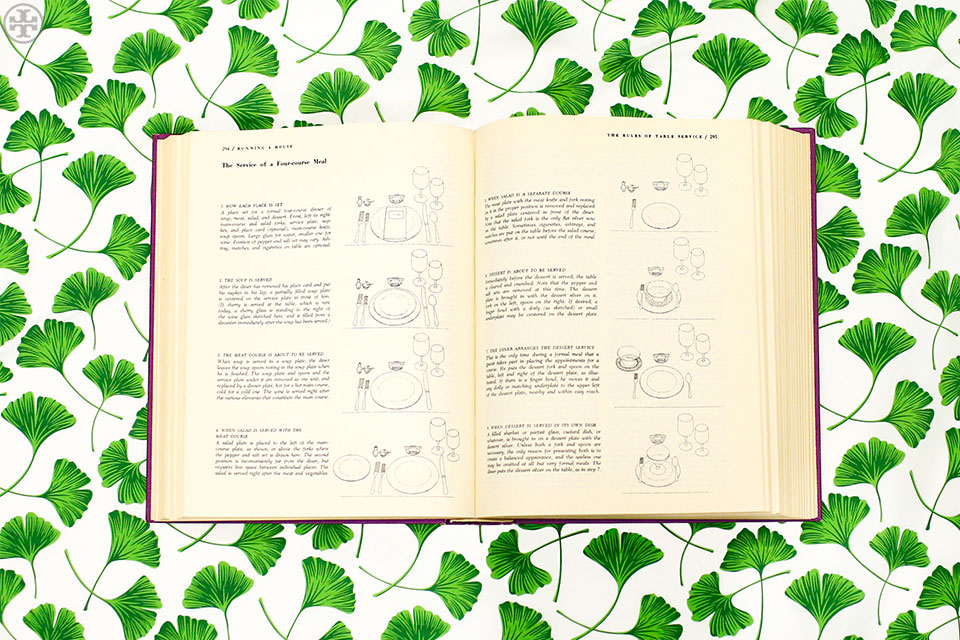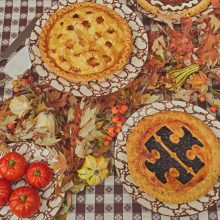Who ever thought reading an etiquette book would be a delight? But flipping through the 1969 edition of Vogue’s Book of Etiquette and Good Manners, with subjects ranging from “housekeeping routine” and “asking for favors” to “appearing on television” and “a weekend at a service academy,” is as entertaining as it is informative and comprehensive. The book is a veritable time capsule, taking you back to an era when The Archies’ Sugar, Sugar topped the charts and ship launches were actual social events. And as amusingly dated some of the points might be — “in large cities, barbers have suddenly become ‘hair stylists’… the tip should be $1” — plenty still apply to today’s 21st-Century lifestyle. Here, a few excerpts when it comes to the rules of table service.
Flat silver at each place is lined up so that the tips of all handles are about an inch in from the table edge. Pieces are evenly spaced; they do not touch each other and those nearest the plate are clear of its rim.
If the first course is already on the table, napkins are put to the left of the forks. If there are no plates on the table, napkins are centered in the empty space in front of each person.
Water glasses are usually filled before guests come to the table and refilled during the meal when required. Wine for each course is served immediately after the main part of the course has been served.
Plates from which hot food is to be eaten should always be hot; those for cold food need not be chilled, but should be at room temperature.
Food is always offered from the left at a low, convenient level. When only one serving dish is carried, it is held in the palm of the left hand. No platter or dish should be held by the rim.
Plates may be removed from the left or the right, depending on their position, but plates directly in front of the diners traditionally are removed from the left.
The mistress of the house or the hostess signifies that the meal is over by placing her napkin on the table, saying something such as “Shall we go into the living room?” and rising; everyone else then follows suit. Used napkins should not be refolded, laid out flat or tightly crumpled.







